News and Media
24 October 2024
Severo Ochoa Colloquium, Instituto de Astrofísica de Andalucía, IAA-CSIC, Spain
Role of Astrophotonics in Astronomy: The MARCOT Pathfinder
YouTube VIDEO
25 July 2024,
Wiley Industrial News
Development of a spectrograph ‘on-a-chip’
11 July 2024
Photonic Integrated Circuits
Project to miniaturise spectrograph wins €3.4 million
10 July 2024
Photonics Spectra
EU-Funded Project Developing NIR Spectrograph "On-A-Chip"

July 9, 2024
EU funding of 3,4 million euros for the PICS4SENS project
The joint project PICS4SENS by the Leibniz Institutes AIP and IHP in cooperation with the innoFSPEC transfer laboratory at the University of Potsdam won the competition in last year's StaF call for proposals and will be funded over a period of four years with a total of 3,4 million euros, 2.2 million euros of which will go to the AIP. The StaF-Verbund funding programme to promote the strengthening of technological and application-oriented research in research networks of scientific institutions in the state of Brandenburg is financed by the European Regional Development Fund (ERDF). PICS4SENS will help to increase the technological maturity and shorten the path to commercialisation of photonic integrated circuits in sensor technology.
These somewhat unwieldy terms can be summarised in a short sentence: the development of a spectrograph 'on-a-chip'. This picture gives an idea of what is involved: the realisation of what are traditionally large and expensive high-performance optics in a tiny photonic chip.
Photonics is a modern technology in which the conduction of light (photons in waveguides) is utilised in a similar way to electronics, which is based on the conduction of electric current (electrons in semiconductors). Just as electronic chips are now ubiquitous in computers, smartphones and cars, the industry is working at top speed to develop photonic integrated circuits (PICs): a rapidly growing future market according to current market analyses. PICs have already established themselves in computer centres and Internet data communication. Another area of application is still in its infancy: spectroscopy and sensor technology.
The scientists in the AIP's Astrophotonics section, led by Dr. Kalaga Madhav, have achieved a leading international position in this field and have developed and utilised various generations of PICs for applications in spectroscopy and interferometry. With a chip of the type shown in the picture, a spectrograph designed for the near-infrared range was built for the first time in the world with the support of AIP research technology: PAWS, the "Potsdam Arrayed Waveguide Spectrograph". Here, a highly sensitive image sensor is cooled to a temperature of –190 °C in order to electronically record the chip's high-resolution spectrum.
The rather bulky design of the cooling housing for the infrared image sensor compared to the chip shows that miniaturisation has not yet been fully achieved. This is precisely where the PICS4SENS project comes in: The Leibniz Institute for Innovative Microelectronics (IHP) has all the prerequisites and expertise to integrate the image sensor into the PIC, a marriage of photonics and electronics, so to speak.
Researchers hope that this will not only lead to a breakthrough for astrophysical instruments, particularly in space, but also to outstanding innovation potential and future market opportunities in areas such as agricultural technology, mobility, healthcare, food technology and chemistry – future topics that have been prioritised by the 'innoBB2025 plus' innovation strategy and the master plan for the optics and photonics cluster in Berlin and Brandenburg.
Project manager Martin Roth emphasises: "With the Leibniz Institute for Innovative Microelectronics (IHP) in Frankfurt (Oder) and the Leibniz Institute for Astrophysics Potsdam (AIP), the state of Brandenburg has two top performers in top international research, according to the latest evaluations by the Leibniz Association. In cooperation with the innoFSPEC transfer laboratory at the University of Potsdam, the PICS4SENS project has excellent prerequisites for further expanding and utilising our technological lead."
9 July 2024
IDW Informationsdienst Wissenschaft,
EU-Förderung mit 3,4 Million Euro für das Projekt PICS4SENS
March 2023 SPIE Photonics West
Invited talk : Astrophotonics: photonic integrated circuits for astronomical instrumentation
Prof. Dr. Martin Roth
Photonic Integrated Circuits (PIC) are best known for their important role in the telecommunication sector, e.g. high speed communication devices in data centers. However, PIC also hold the promise for innovation in sectors like life science, medicine, sensing, automotive etc. The past two decades have seen efforts of utilizing PIC to enhance the performance of instrumentation for astronomical telescopes, perhaps the most spectacular example being the integrated optics beam combiner for the interferometer GRAVITY at the ESO Very Large Telescope. This instrument has enabled observations of the supermassive black hole in the center of the Milky Way at unprecedented angular resolution, eventually leading to the Nobel Price for Physics in 2020. Several groups worldwide are actively engaged in the emerging field of astrophotonics research, amongst them the innoFSPEC Center in Potsdam, Germany. We present results for a number of applications developed at innoFSPEC, notably PIC for integrated photonic spectrographs on the basis of arrayed waveguide gratings and the PAWS demonstrator (Potsdam Arrayed Waveguide Spectrograph), PIC-based ring resonators in astronomical frequency combs for precision wavelength calibration, discrete beam combiners (DBC) for large astronomical interferometers, as well as aperiodic fiber Bragg gratings for complex astronomical filters and their possible derivatives in PIC.
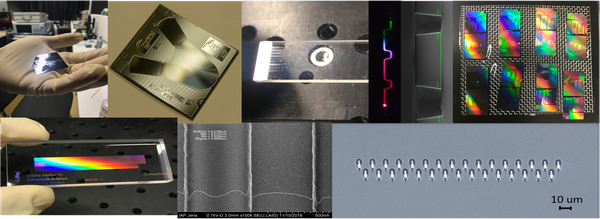
2023 Astronomical Notes (AN) Proceedings SDW2022
LINK TO PUBLICATIONS

The 7th installment of a successful series of workshops brought together scientists and engineers who develop, produce, implement and operate the most advanced imaging sensors used in scientific instrumentation.
The workshop builds on a consolidated format that includes talks from the leading experts in the technology and scientific fields, and provides extensive time for discussions during oral/poster sessions, and interactive roundtables. Informal discussions continue during group activities promoted by the social and cultural events featuring the best offered by the location of choice, Potsdam. The workshop formula is tailored to keep an informal and conducive atmosphere to the exchange of information and establishing long-lasting relationships and collaborations.
The proceedings will be peer-reviewed and published as a feature issue of the 2023 Astronomische Nachrichten / Astronomical Notes (AN)
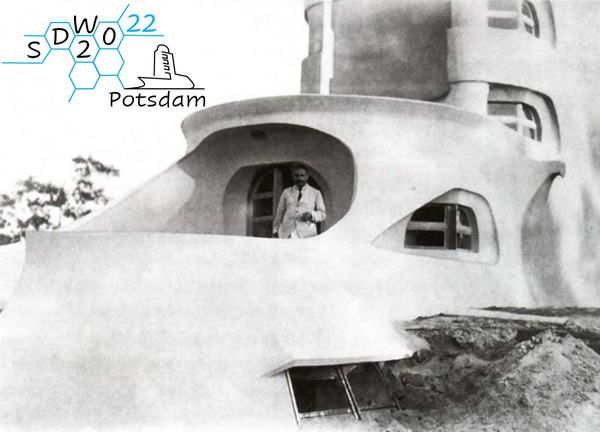
Albert Einstein in front of the Einstein Tower, Telegrafenberg, Potsdam (1921).
Credit: AIP/ArchivMarch 04 2022
LaserFocusWorld
Astrophotonics moves to real-world applications
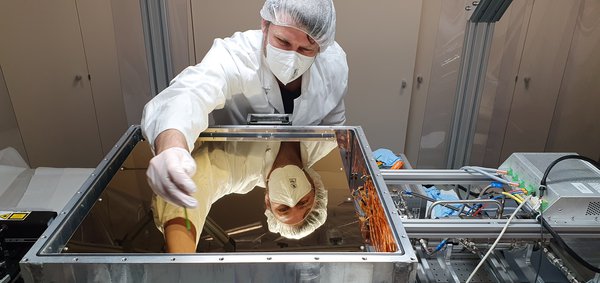
PAWS, a prototype of an integrated photon spectrograph on a chip during integration with the cryogenically cooled infrared array Teledyne H2RG in the innoFSPEC laboratory. The waveguide array (insert) provides a spectral resolution of R-15,000 in the astronomical range H (1.55 μm) with unprecedented efficiency. The chip was developed by innoFSPEC and manufactured by Enablence (USA). Innovative spectrographs of this kind for future space missions promise significant savings in mass and volume compared to, for example, the 196 kg NIRSpec on board the James Webb Space Telescope.
Credit: AIP/Svend-Marian BauerA sharp look into space with new instruments
27.12.2021 - Year in Review Astrophysics 2021.
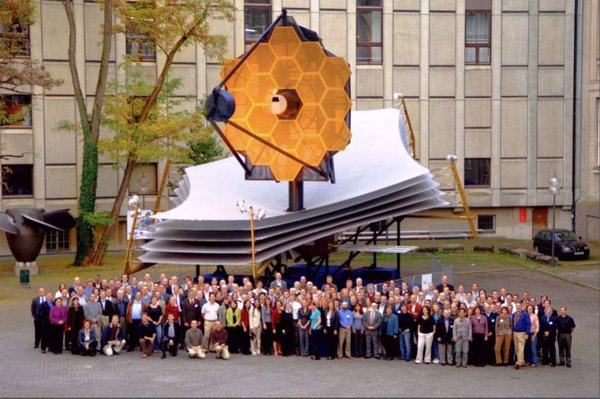
This photo, taken on the occasion of a James Webb Consortium meeting, shows the dimensions of the James Webb Space Telescope. The model of this telescope corresponds to the size of the original.
Credit: Örs Hunor Detre/MPIAAstrophotonics - an emerging field of astrophysics
13.08.2021 - Two renowned journals in the field of optics and photonics publish joint special issue.
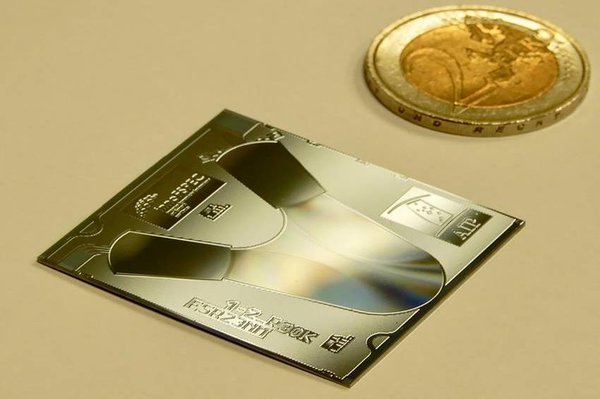
This astrophotonic spectrograph on a chip was developed at innoFSPEC. It can replace the conventional bulky diffraction gratings in spectrographs to separate the starlight collected by a telescope into its wavelengths.
Credit: A. Stoll, AIPFollowing the Astro2020 Decadal Survey Pathways to Discovery in Astronomy and Astrophysics for the 2020s report identifies Astrophotonics as a key technology area for the future of astronomy. Ref. to page. 436, “K.4.7 Technology Development: Astrophotonics” of the full report.
"The more coordinated approach adopted by Europe (Germany in particular) and Australia has led to success and leadership in this field"

Copyright ©2022 National Academy of Sciences. All rights reserved.
Lead by Dr Aline Dinkelaker and Dr Aashia Rahman and an international editorial team, OPTICA (formerly OSA) publishes a joint feature issue on the topic of astrophotonics in JOSA B and Applied Optics.
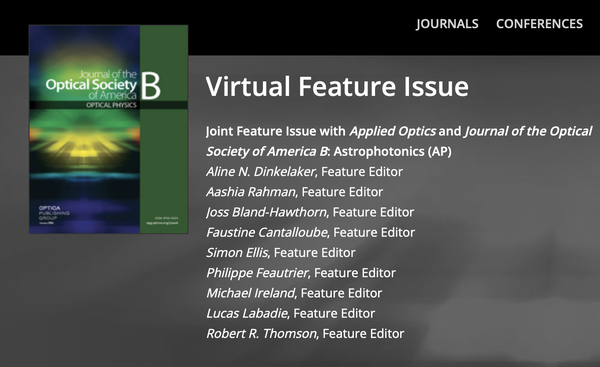
The open access article "Astrophotonics: introduction to the feature issue" can be read here.
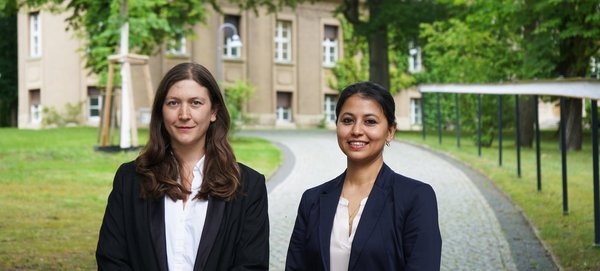
Astrophotonics – an emerging field in astrophysics
Credit: AIP"Astrophotonics : Processing Starlight"
Dr. Aline Dinkelaker and Dr. Aashia Rahman discuss how starlight processors are transforming future astronomical instruments.
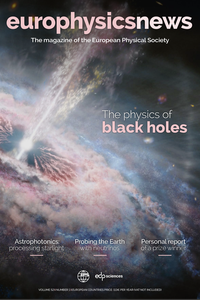
europhysicsnews VOLUME 52 I NUMBER 1
In The Innovations Platform Issue 3 Page 50, Professor Martin M Roth and Dr Kalaga Madhav from innoFSPEC Potsdam explain how Astrophotonics is crucial to the new and next generation of astronomy infrastructure
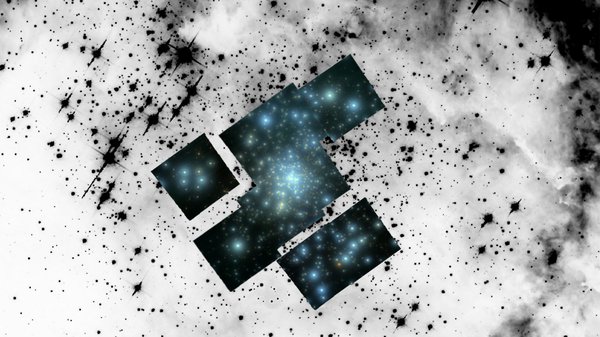
The Innovation Platform Issue 3
Credit: Norberto Castro Rodriguez